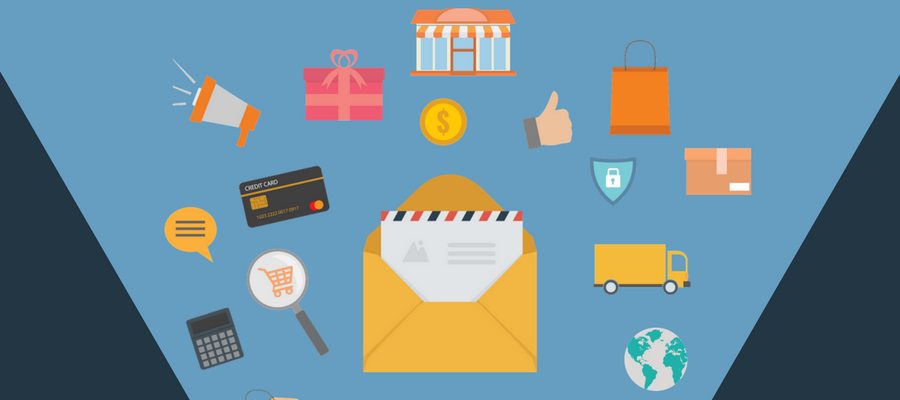How To Master The Art of Autoresponder Marketing
What Is An Autoresponder?
An autoresponder is a computer program that automatically answers e-mail sent to it. Autoresponders are often used as e-mail marketing tools to immediately provide information to their prospective customers and then follow-up with them at preset time intervals.
What Are The Types Of Autoresponders?
The basic forms of autoresponders are automatic response emails that we receive when we send an email to a company. An out of office message, an automatic response to a support request may well be considered as autoresponders. In that sense, not all autoresponders can be recognized as marketing e-mails. We can easily comment that most of the autoresponders we receive are functional/transactional e-mails that are intended to convey a simple and informative message to the customer.
As eCommerce and SaaS gained pace, these simple messages have transformed into important marketing tools. All of the business websites out there are now trying to convince their visitors to sign-up and leave their e-mail addresses so that they can reach these customers via e-mail marketing campaigns and autoresponders.
Welcome, thank you, order received, service activation, post-purchase, special days, shopping cart reminder are all examples to autoresponders, the emails that are triggered by a user action. When a user abandons her shopping cart without a purchase, this action triggers a cart reminder e-mail whereas signing-up a website triggers a welcome e-mail. An autoresponder can as well be executed in the form of a push notification or a pop-up.
Which Rules Can Be Applied While Setting Up Autoresponders?
The “auto” refers to an automatically sent message and what makes it automatic is the pre-defined business rule behind this message. These are usually the “If this, then that” kind of rules and do not need a high sense of creativity.
4 different types of business rules shall be defined before sending out an autoresponder:
- When to send: Which action is going to trigger this message
- What to send: Which content shall be included in this message
- Whom to send: Who is going to receive this message
- Which format to use: Will this be e-mail, a Twitter message, a push message, a pop-up etc.
Setting up a series of autoresponders for your business is not a nice to have but rather a must today. But how to stand out from the crowd if everyone’s using autoresponders as a tool for customer communication? The answer lies in the predictive autoresponders powered with Artificial Intelligence (AI).
How Can AI Help An eCommerce Marketer To Develop A Better Autoresponder Email Marketing Practice?
In the context of eCommerce, AI is a sexy term as it refers to all activities that are helping online retailers with dehumanized methods. Dynamic pricing, AI-powered personalization, customer service via chatbots, retargeting, stock and payment tracking are all areas through which AI has been helping eCommerce businesses for years.
It is not common to find “autoresponder marketing” and “AI” in the same sentence. Luckily, the times are changing and AI offers a whole lot of improvement possibilities for the autoresponders. A predictive autoresponder for eCommerce is a special type of a message that not only includes a content but predicts the content that is more likely to convert. The content is chosen by analyzing the user’s recent clickstream behaviors.

In email marketing, a lot of eCommerce executives have long been trying to find a way to personalize their messages. The subject line, the content, the context, the timing are all optimized to deliver better open rates and click-through rates. A predictive autoresponder equips the email marketer in such a way that it automates of all these processes and takes much of the burden out of the marketer’s shoulders.
A few examples to predictive autoresponders are:
- A visitor stops by abc.com looking for a pair of sneakers. This is her 3rd visit to this online store. In her previous visits, she had a look at colorful products and visited pages of Vans, Nike, and Keds. During this visit, she lands on the sneaker category page but does not ever open a product page. With the help of AI, it is possible to predict that this user is looking for sneakers and send her an e-mail or trigger a pop-up message that includes colorful sneakers from the brands Vans, Nike, and Keds.
- com is an online shopping site selling grocery products. A user visits this store frequently and buys some dairy products. The estimated time for his next purchase could be pre-defined and this user may be reminded via e-mails to say that the time has come for him to buy milk, butter, and other dairy products. This reminder might as well include a pre-filled cart in which the products he recently purchased can be showcased. All he has to do is to click on the “Add to Cart” button, land on a pre-filled cart on cde.com and finalize his order.
- A user buys a dress from skw.com. With the help of her recent purchase history, it is possible to know which brands she’s into and the level of her price sensitivity. After her order is shipped, a cross-selling email can be triggered and this e-mail can include cross-selling items ie. bags, accessories chosen from her favorite brands which fit her price range and will go well with the dress she has just bought.
- com sells fashion items for stylish men. The eCommerce team pays a lot of importance to the look and feel of the emails they send. They’ve got hundreds of banners to be featured on the emails and they have a hard time choosing the right banner for the right audience. AI powered autoresponders can also make a difference here by making the 3 important decisions 1) Which banner to choose 2) Which products to include 3) Whom to send.
When an eCommerce marketer starts using a predictive autoresponders solution like Personalization, he/she will be able to concentrate more on the copywriting and strategic parts of e-mail marketing such as planning, monitoring the process, A/B testing, reviewing the results and optimizing the process.
A predictive autoresponder is likely to deliver at least 6X higher transaction rates than the standard ones as these messages are personalized with the help of predictive algorithms.
How To Select A Vendor For Developing Your Predictive Autoresponders?

The vendor selection in marketing technology and email automation space has always been tough however a few tips may be helpful:
- Predictive competencies: Developing a predictive technology is hard and takes years. While talking to a vendor, make sure that the company has a proven track record of success.
- Easy-to-use interface: For setting business rules, you will need a customer interface. You’ll need to play with some features, daily. Look for vendors that are able to provide sleek interfaces.
- Reporting capabilities: In terms of making optimization, you need to keep track of the performance of your predictive autoresponders. The vendor has to be able to report the performance in an accurate and transparent way.
- Easy implementation: The implementation needs to be effortless for your IT guys. Look for vendors that have a sound integration practice and a state-of-the-art platform.
One important fact to consider is that; a predictive autoresponder software is not the same as an email marketing software. An email marketing software delivers the huge volume of e-Commerce emails in a timely, spam-free manner but the predictive autoresponder software is the one that builds the ‘personalization’ layer on top the email delivery function. So from this angle, both are required tools that should be present in an eCommerce email marketer’s marketing technology stack.

Get more to your email
Subscribe to our newsletter and access exclusive content and offers available only to MonsterPost subscribers.

Leave a Reply
You must be logged in to post a comment.